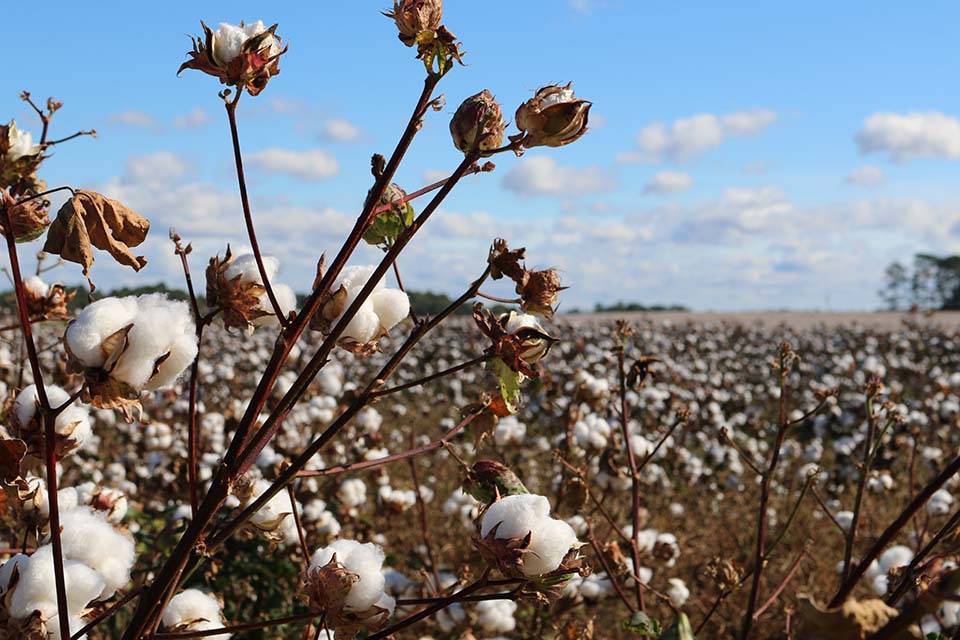Article 1 of 5
WHAT AILS THE INDIAN APPAREL INDUSTRY - A SERIES
A series of 5 articles where I dwell into the Indian textile & apparel industry to understand the underlying problems which have impacted it, as it stands today.
This series covers various topics like;
- History of the Indian textile industry & the problems it brings with it.
- A segmented approach to looking at the various problems.
- An analysis of the policies governing the segment & challenges emerging from them.
- Understand the deficiency in the 3 areas of Reliability, Sustainability & Performance.
- Disruption & uncertainty - what ails the industry today.
With this series, the aim is to analyse and understand the challenges faced by the Indian Textile industry & how we can overcome these & become competitive in the world.
LET’S BEGIN BY UNDERSTANDING THE HISTORY OF THE INDIAN TEXTILE INDUSTRY.
India, up until 1750, produced about 25% of the world’s textile output. Indian textiles were popular world over & sought after for their finesse, quality and design. Preference was given to the Indian weaving for its ‘detail and delicacy’.
Textiles have historically formed an important component of India’s exports. Marco Polo’s records show that Indian textiles used to be exported to China and South-East Asia. They comprised a significant portion of the Portuguese trade with India. These included embroidered bedspreads, wall hangings and quilts of embroidered wild silk on a cotton or jute ground.
Prior to colonisation, India’s manually operated textile machines were among the best in the world. They served as a model for production of the first textile machines in the then newly industrialised Britain and Germany.
Unfortunately, Colonisation put an end to India’s glorious textiles legacy, The British could not compete with the Indian textile industry and as a result resorted to complete destruction of the industry. By around 1880 the domestic market had grown to be serviced solely by the British manufacturers.
India, once the world’s leading exporter of textiles, was forced to become a net importer.
Import restrictions had protected the industry from foreign competition, but, at the same time, licensing, price and distribution controls severely limited its expansion and modernisation.

At the time of independence in 1947, India's cotton textile industry was the second largest in the world. The mills were concentrated in Mumbai and Chennai regions and were identified with high quality fabrics. These mills not only catered to the domestic demand but also to considerable exports. During this time the industry was owned and managed largely by Indians and the foreign capital in the form of British ownership was in jute and tea.
However the industry suffered a serious setback due to partition, as the long staple cotton growing areas went to Pakistan & most of the cotton mills remained in India. Under these circumstances, India faced a severe crisis of obtaining high quality cotton. The country had to resort to large scale imports of long staple cotton which was an extremely difficult task in view of the limited foreign exchange reserves.
Since independence, the industry has gone through many changes.
LET'S EXAMINE SOME OF THESE CHANGES TO UNDERSTAND WHERE WE STAND TODAY.
Changing landscape in the world.
India’s cotton (Textile) industry has grown to become the the nation’s largest in terms of employment and production and remains exclusively in private hands. A unique feature of the industry’s evolution has been a trend towards small scale, labour intensive establishments. This was in contrast to the international trend, perhaps a deliberate effort to find jobs for the growing workforce.
As the years passed, textile industry’s relative position declined substantially as heavy industry took prominence. India’s share in the world cotton cloth market too declined as we neither participated in the teens towards capital intensive operation, nor the spread of synthetic fibres, like the other nations.

Government policies and its impact on textile industry.
Although the industry was protected against foreign competition by import prohibitions, the development of large-scale sector saw problems like labour strikes, etc. At the same time small scale sector benefited from government subsidies and a rapid growing share of the domestic market.
The government’s emphasis was placed on heavy industry, public sector investment and activities that would generate large scale employment.
The textile industry, as an already developed consumer goods industry, was given a low priority for investment. These policies were enforced by regulations restricting expansion of capacity through licensing requirements and various procedures favouring small, labour intensive operations. Furthermore, import of machinery, spare parts and production materials was strictly regulated, with importers required to prove that such goods were not available in the country.
As a result, cotton cloth production from large mills declined.
It is evident that the investment in the large-scale sector has been limited to spindleage, which is used to produce yarn required by the growing small scale sector. Spinning mills proliferated and cotton yarn production increased but the number of composite mills, which weave cloth as well as spin yarn has virtually remained unchanged.
The planned expansion of small-scale sector was achieved with government assistance, including tax reductions, concessional credit schemes, direct subsidies, etc.
The continuing growth of small scale sector has doubled employment, however it has restricted the growth and modernisation of the textile industry. This in turn, this has lost the country the benefits of expansion, increased exports and the increased employment opportunities that would have accrued from the multiplier effect of expansion.
A fragmentation approach
The government policies have systematically encouraged the fragmentation of the textile industry. It is not clear if these policies have served a useful economic or social purpose. Post-independence policy required stringent licensing and discouraged expansion of composite textile mills, actively promoting the decentralisation of this sector.
The legacy of Swadeshi movement continued and restricted textile imports. The policy further encouraged growth of independent spinning units and small power looms. Given the size and it being outside the ambit of sales & excise duty, the sector was called unorganised. The evasion of tax saw the emergence of this sector take pre eminence over the organised sector.
Today, India has built a conducive environment for industrialisation and the textile industry is a pioneer here. The start of the liberalisation was around 1992 propelled the textile industry and has made it a force to reckon with.
The Government's role in the textile industry has become more reformists in nature. Initially, policies were drawn to provide employment with a clear focus on promoting the small-scale industry. The scenario changed after 1995, with policies being designed to encourage investments in installing modern weaving machinery as well as gradually eliminating the pro decentralised sector policy focus.
If India becomes competitive in some key segments, it would serve as a basis for building a modern industry. Though some signs of this is seen in the spinning mills, the other segments are seemingly untouched. A structural change is the need of the hour in order to be compete with the rest of the world.In this emerging scenario, application of technology is required not only to upgrade and innovate the quality of products but also to reduce overhead costs.
With the removal of the Quota system in the year 2005, the textile and clothing industry is undergoing structural changes worldwide.The production lines are shifting distinctly towards low cost producing countries with flexible production systems, to match the growing retail power.
Another interesting feature of the Indian Market is the emergence of local brands. All the leading textile and apparel firms have introduced domestic brands and are increasingly positioning themselves within the various segments in the domestic market.

ALTHOUGH COTTON TEXTILE IS ONE OF THE MOST IMPORTANT INDUSTRIES OF INDIA, IT STILL SUFFERS FROM MANY PROBLEMS.
Some of the burning problems are briefly described as under:
1.Scarcity of Raw Cotton: As mentioned earlier, Indian cotton textile industry suffered a lot as a result of partition. Although much headway has been made to improve the production of raw cotton, its supply has always fallen short of the demand. Consequently, much of the long staple cotton requirements are met by restoring to imports.
2.Obsolete Machinery: Most of the textile mills are using obsolete machinery. This results in low productivity and inferior quality. In the developed countries, the textile machinery installed even 10-15 years ago has become outdated and obsolete, whereas in India about 75% machinery is 25 -30 years old.
3.Erratic Power Supply: Power supply to most cotton textile mills is erratic and inadequate which adversely affects the production.
4.Low Productivity of Labour: Labour productivity in India is extremely low as compared to some of the advanced countries. On an average a worker in India handles about 2 looms as compared to 30 looms in Japan. ( That is because of the quality of the looms, the inferior quality of yarn leading to breakages, lot of manual interference in looms )
5.Strikes: Labour strikes are common in the industrial sector but cotton textile industry suffers a lot due to frequent labour strikes. The long drawn strike in 1980 dealt a severe blow to the organised sector. It took almost 23 years for the Government to realise this and introduce legislation for encouraging the organised sector.
6.Stiff Competition: Indian cotton mill industry has to face stiff competition from powerloom and handloom sector, synthetic fibres and from products of other countries.
IN CONCLUSION,
I would say none of these problems are permanent. It just needs a paradigm shift in the way we function. Indian economy has to make serious efforts to strengthen the textile Industry for flourishing both in domestic and international markets. Some other recommendations are;
- India needs to invest in R&D to reduce per unit costs, transaction costs and to develop new products.
- The Government needs to revisit the existing incentive to textile machinery manufacturers and consult the industry leaders for further improvement.
- Setting up of Training facilities all across India
- Brand India and Market exploration and promotion of textile sector.
- FDI in textiles need to be encouraged in a big way.
- Setting up of design centres to encourage design and product development
- Creation of new management institutes for textiles and apparel and favourable climate for large scale investment.
- Setting up of overseas acquisition projects in thrust markets like USA and EU.
- Infrastructure development and measures for improving productivity and efficiency.
RELATED TOPICS:#Apparel,Fashion,Innovation,Product Development,knit,Fashion Design,fashion industry,apparel industry,creation,history,government policies,Sanjay Lal
Leave a comment
Our email address will not be published. Required fields are marked *







3 Comments
Jumac ManufacturingApr 05, 2024 at 13:20 pm
The article provides a great overview of the Indian textile industry. It's insightful to learn about the industry's rich history and its current challenges. Despite facing challenges, India's textile industry has immense potential to grow and thrive. I particularly enjoyed the suggestions for improvement, especially the focus on investing in research and development. This is a crucial step for the industry to regain its competitive edge. Overall, a well-written and informative piece!
OutwadyDec 03, 2022 at 09:49 am
Article Ruschitzka F, Borer JS, Krum H, Flammer AJ, Yeomans ND, Libby P, Luscher TF, Solomon DH, Husni ME, Graham DY, Davey DA, Wisniewski LM, Menon V, Fayyad R, Beckerman B, Iorga D, Lincoff AM, Nissen SE Differential blood pressure effects of ibuprofen, naproxen, and celecoxib in patients with arthritis the PRECISION ABPM Prospective Randomized Evaluation of Celecoxib Integrated Safety Versus Ibuprofen or Naproxen Ambulatory Blood Pressure Measurement Trial buy generic cialis online safely
Cialis buy onlineOct 16, 2022 at 13:16 pm
We are a gaggle of volunteers and starting a brand new scheme in our community. Your web site provided us with useful info to work on. You have performed a formidable activity and our entire community will probably be grateful to you.